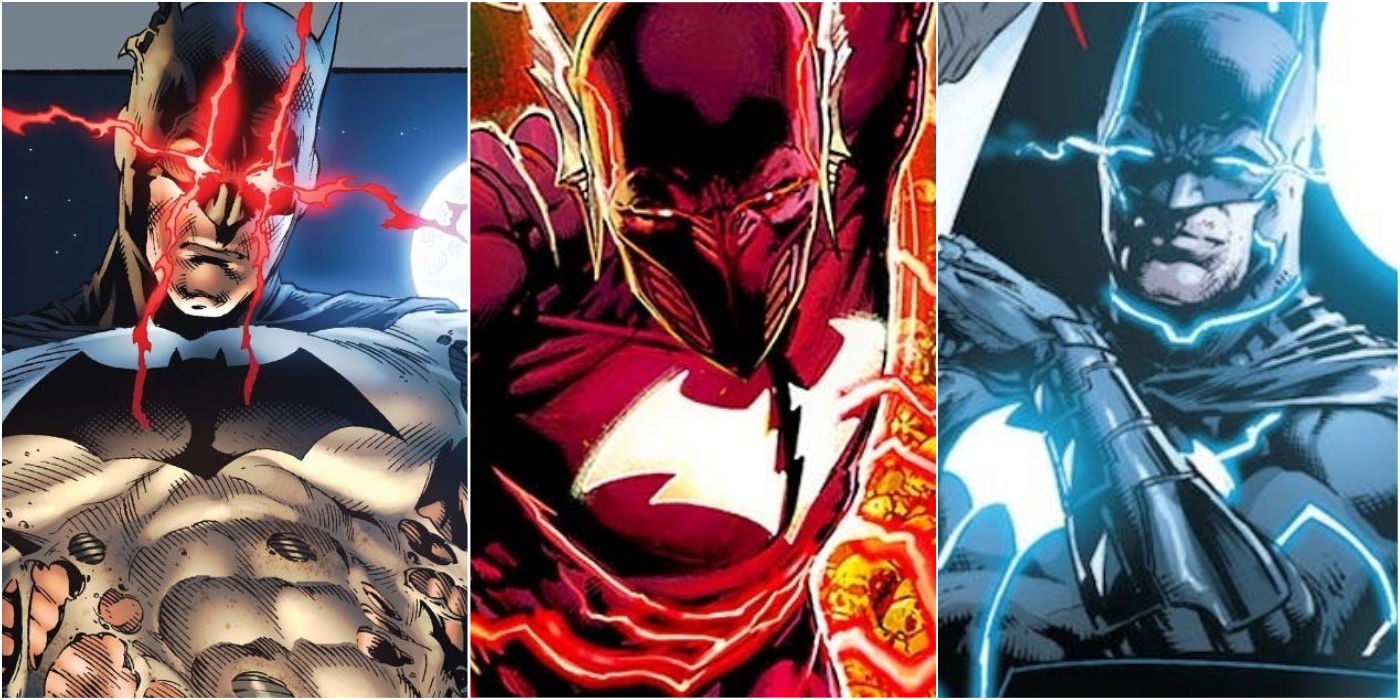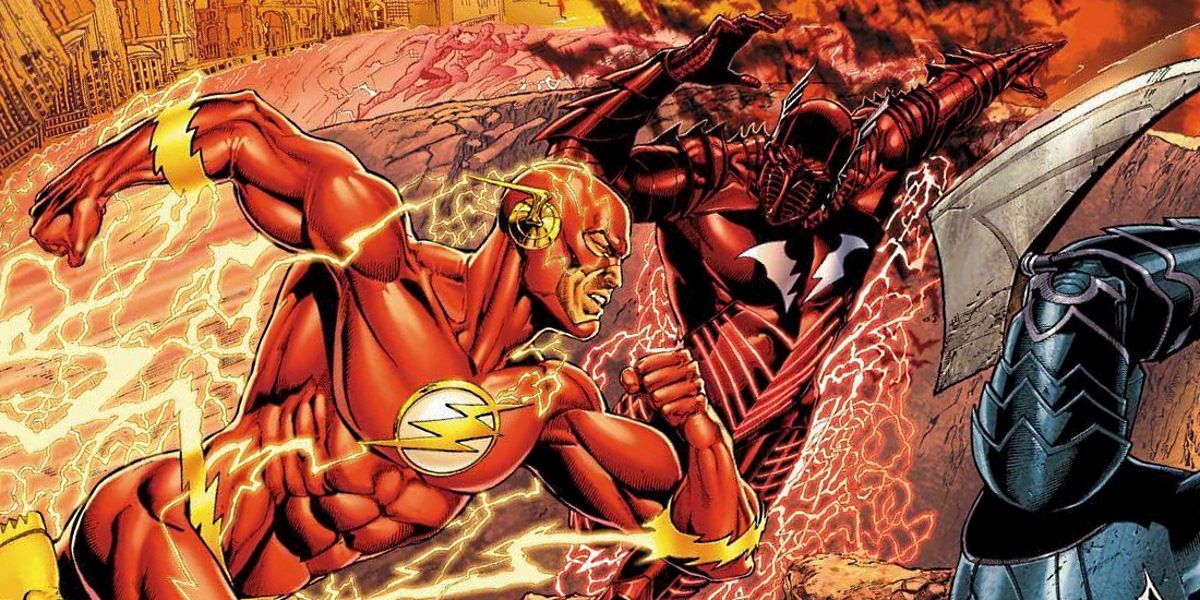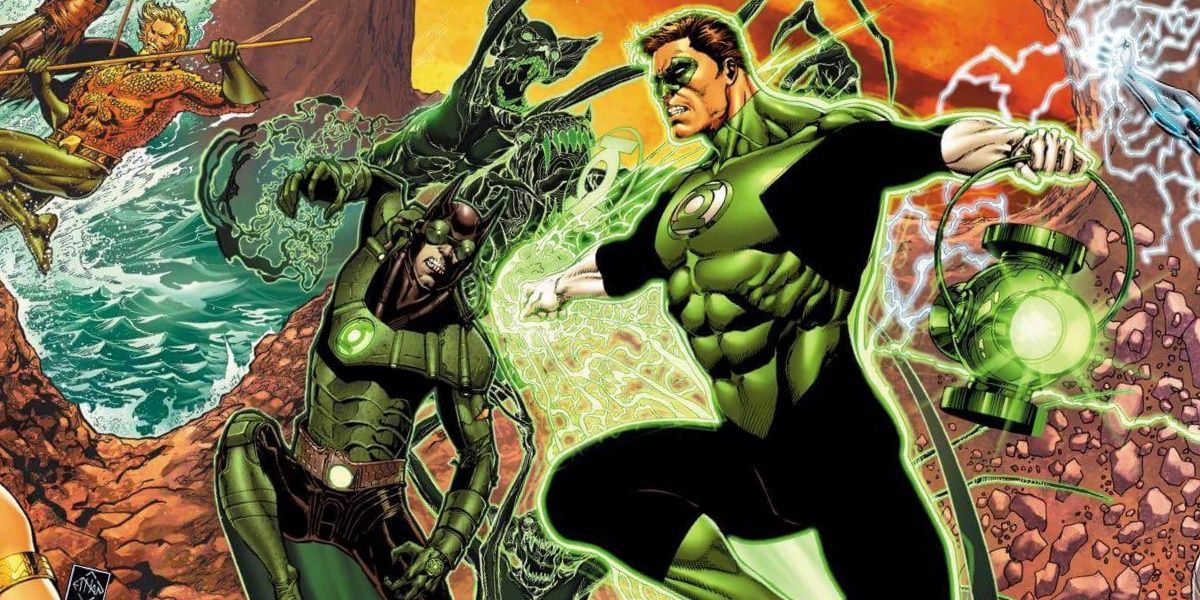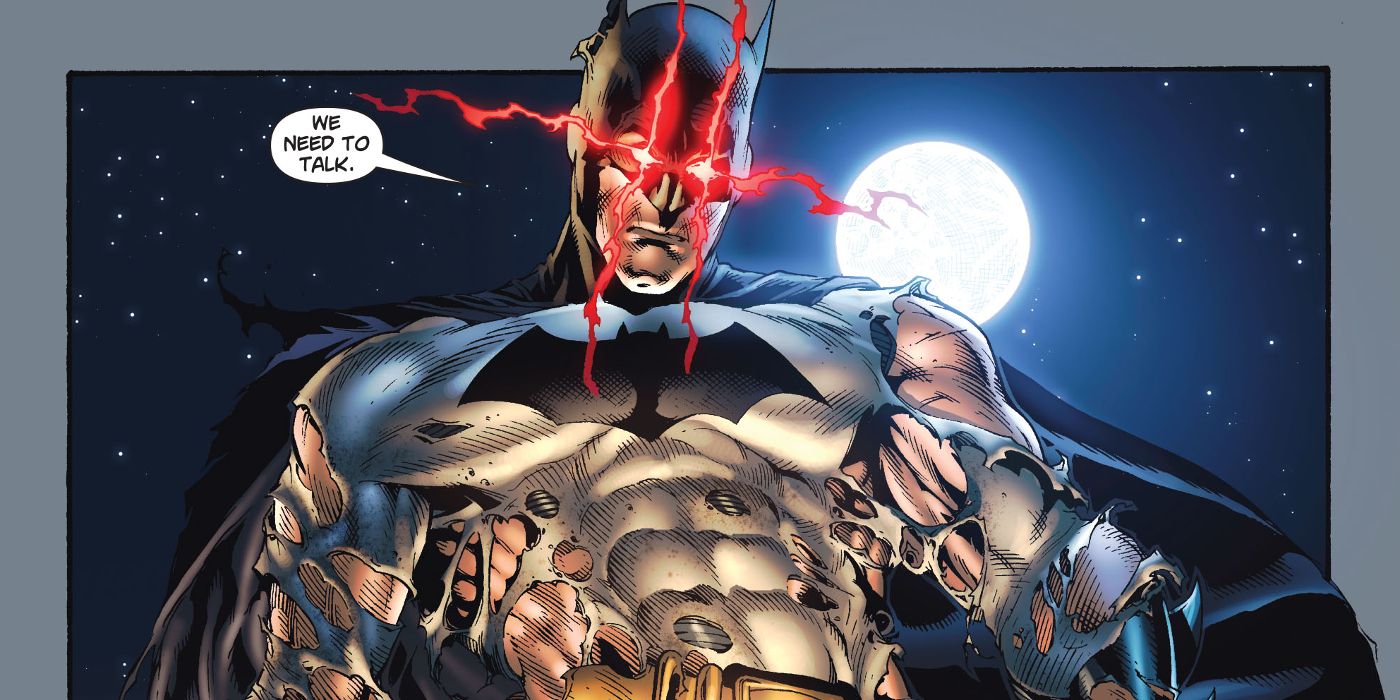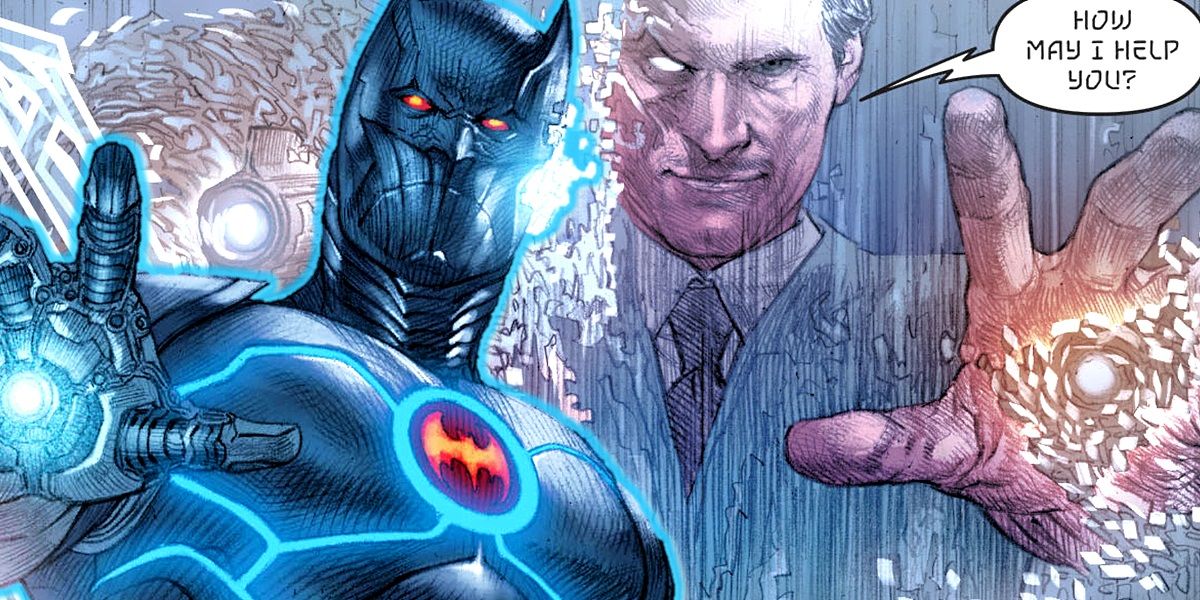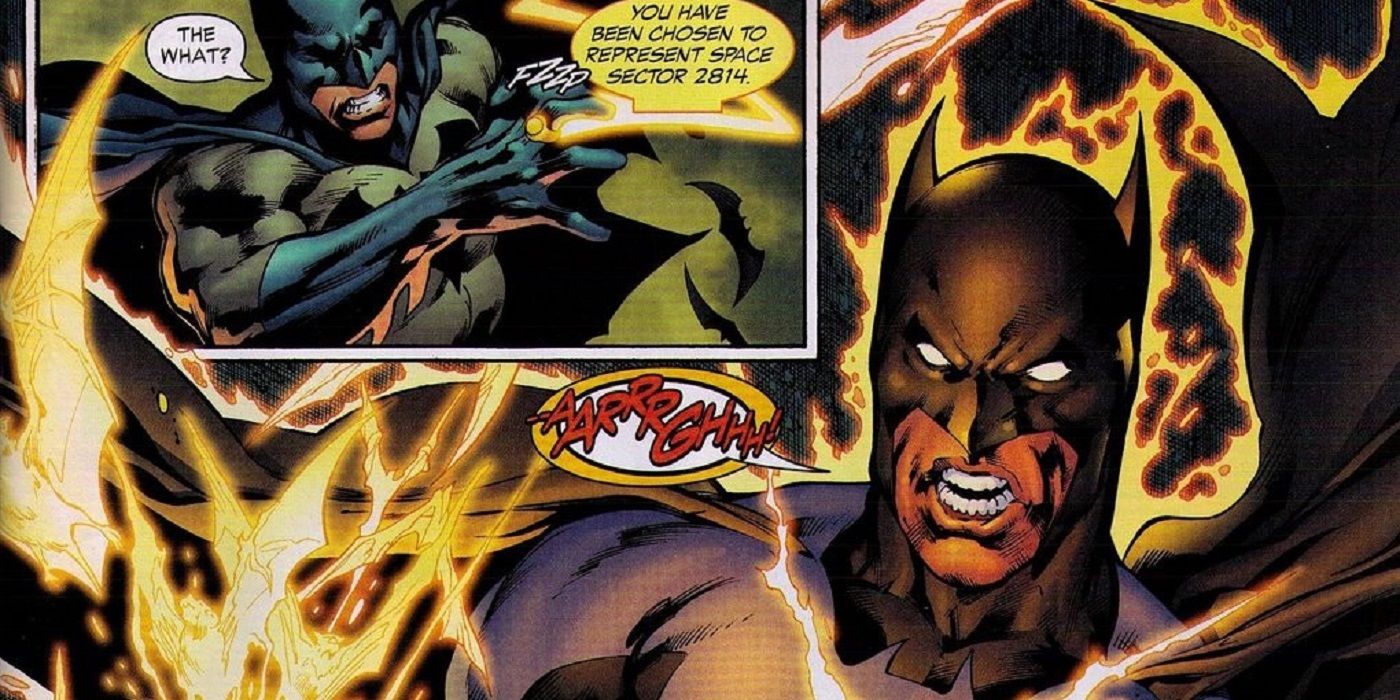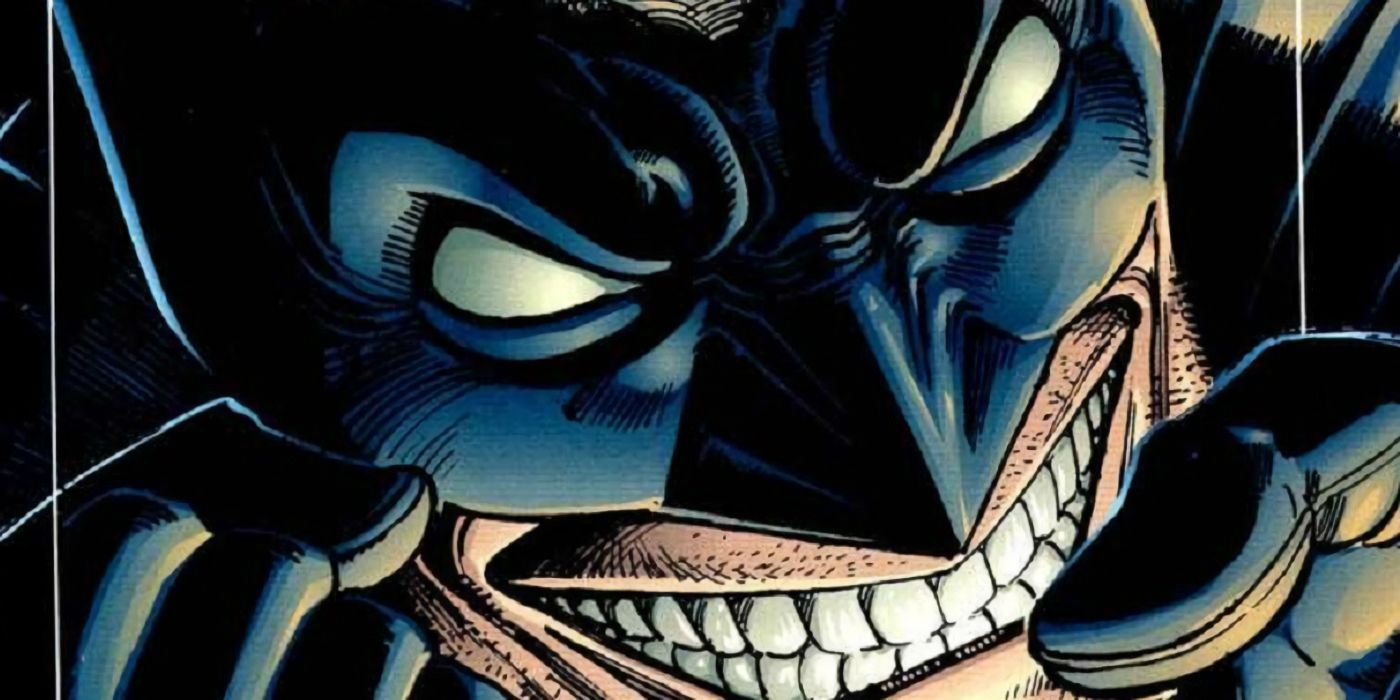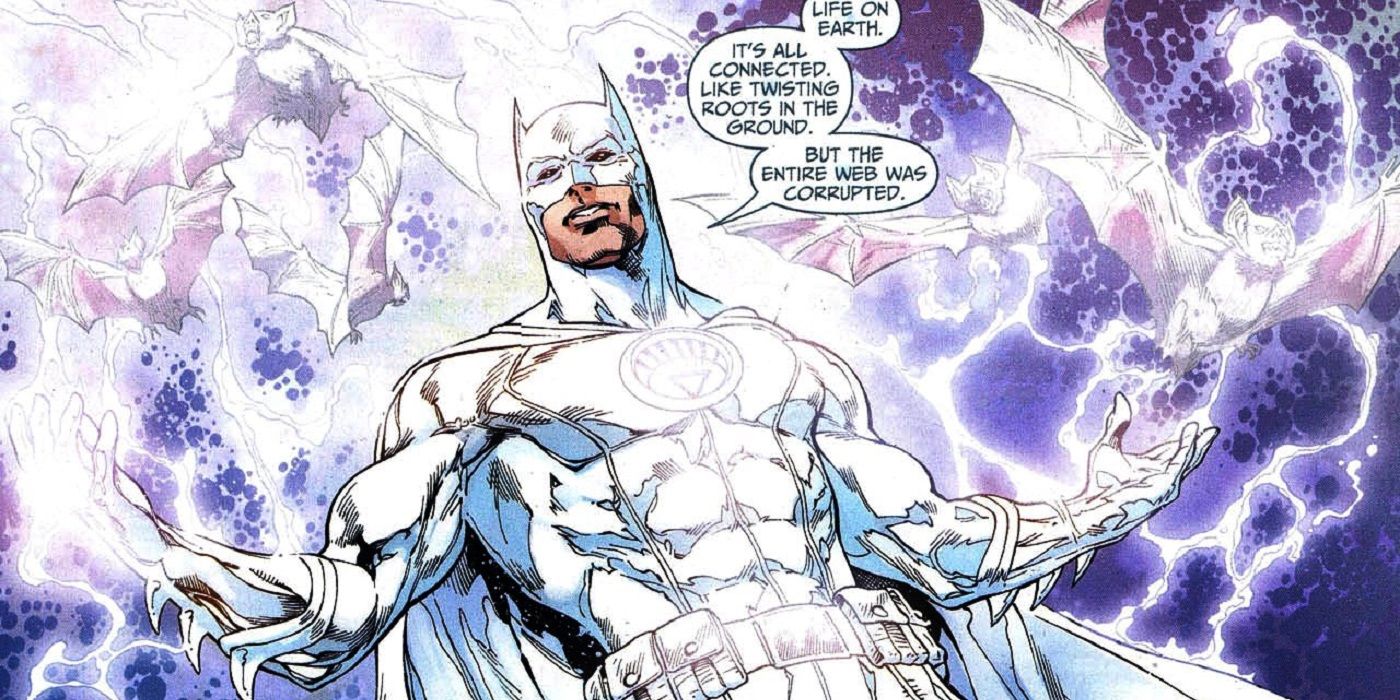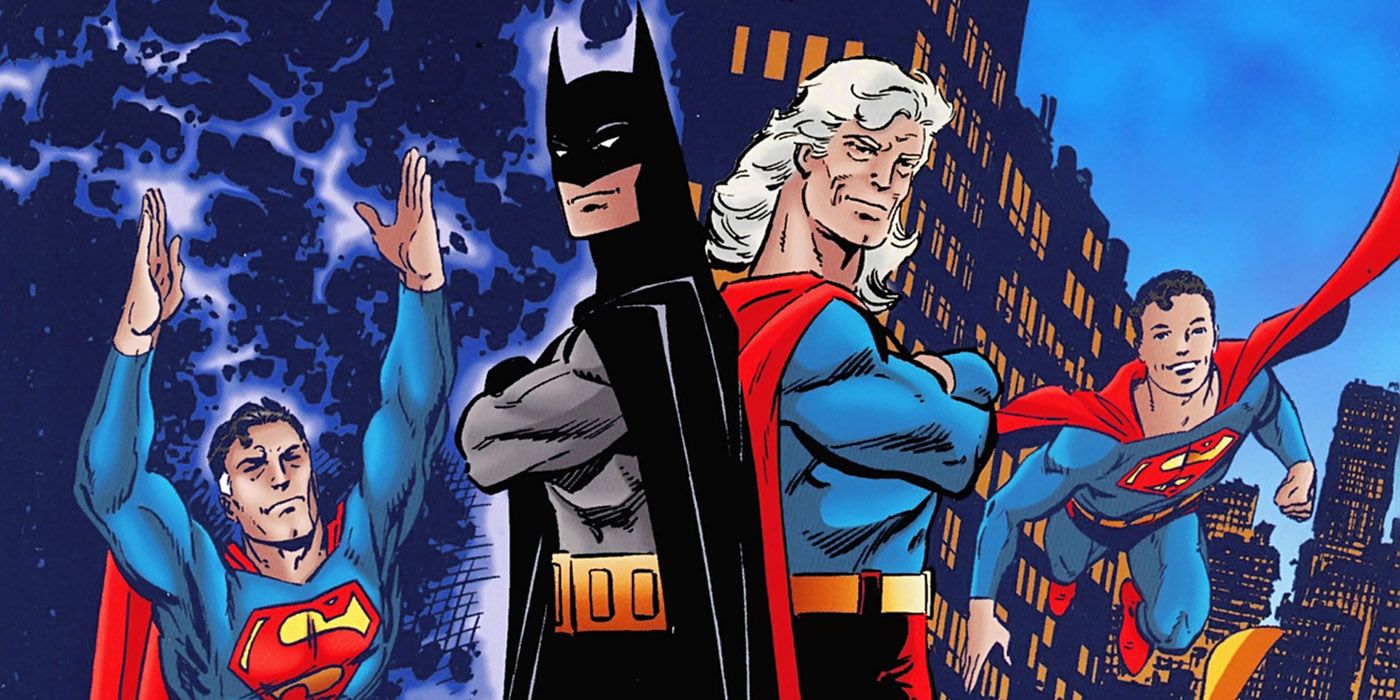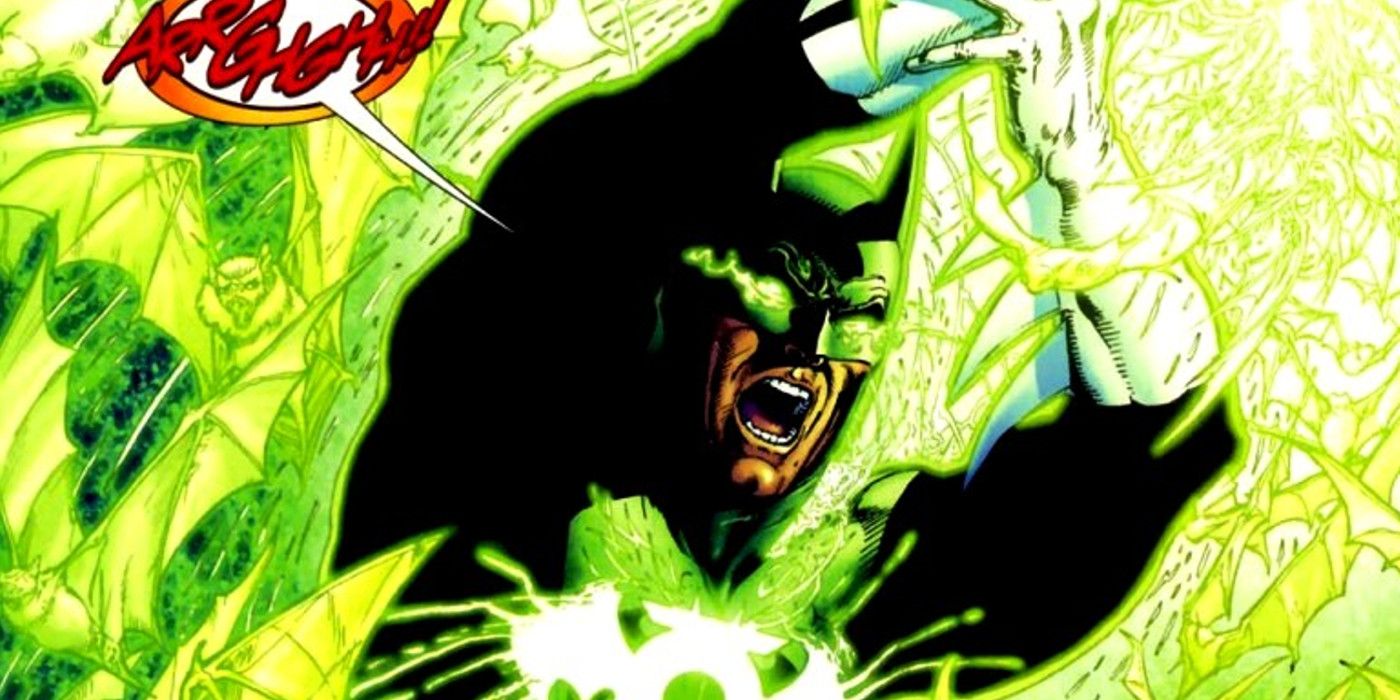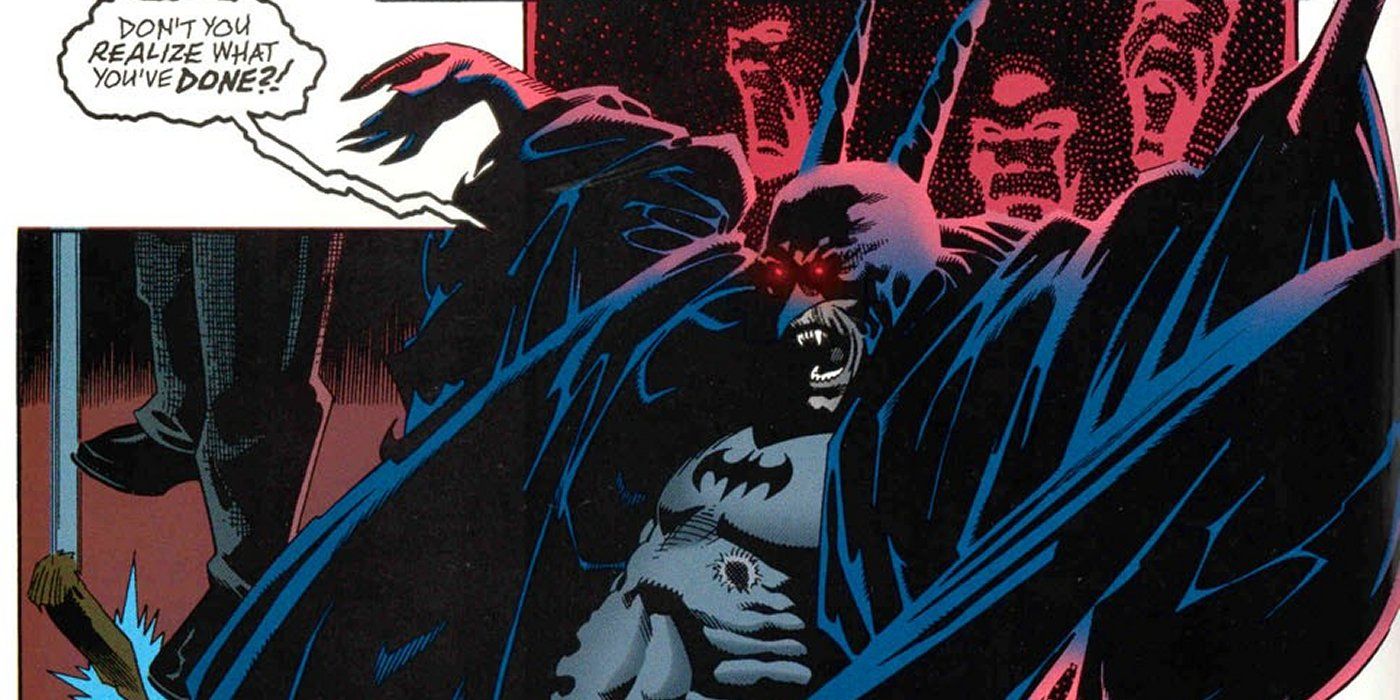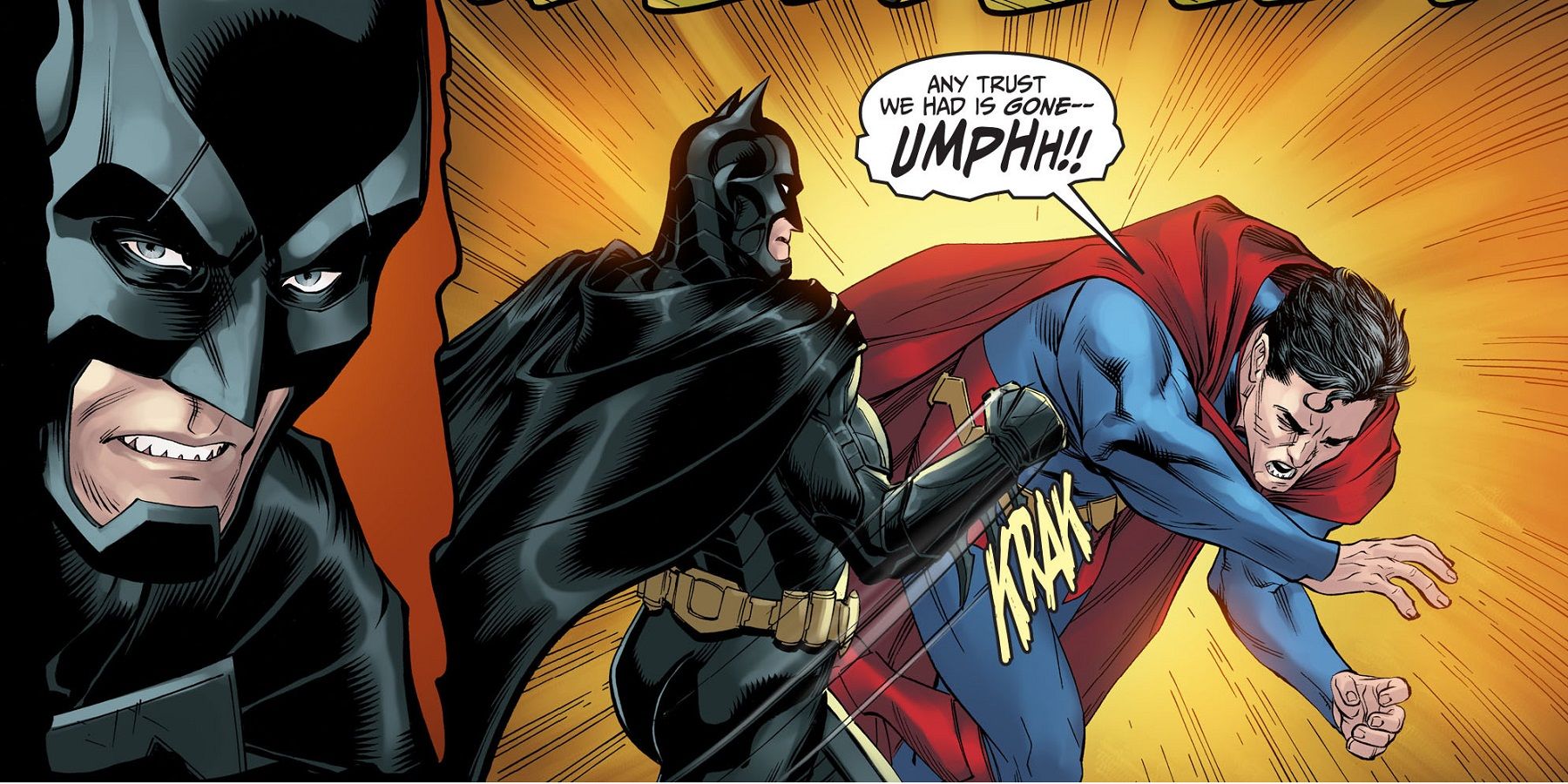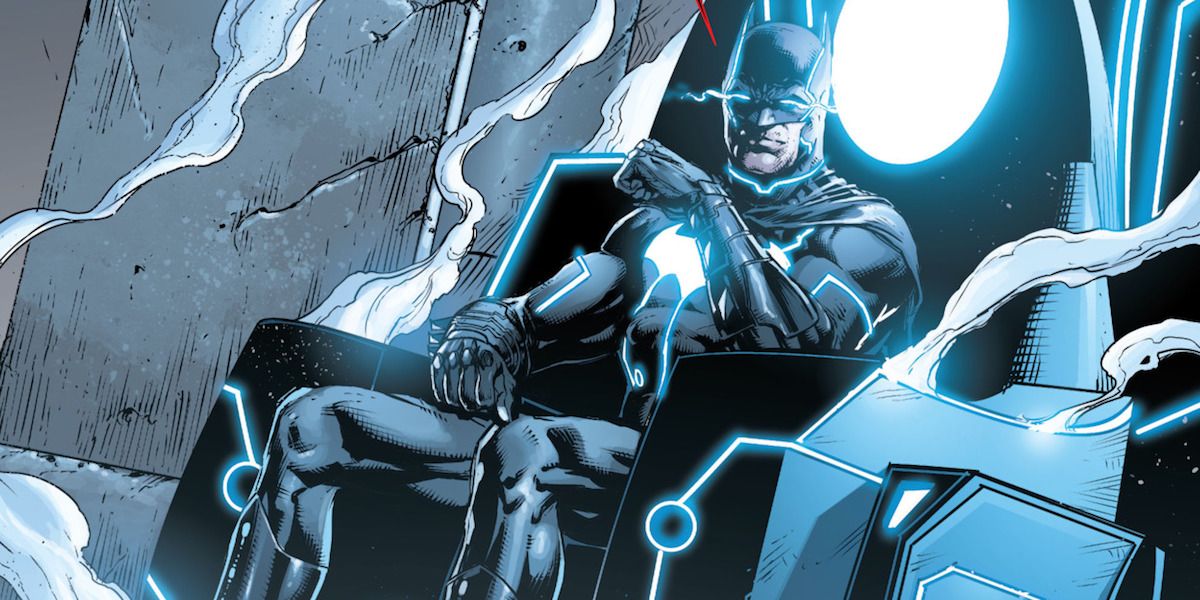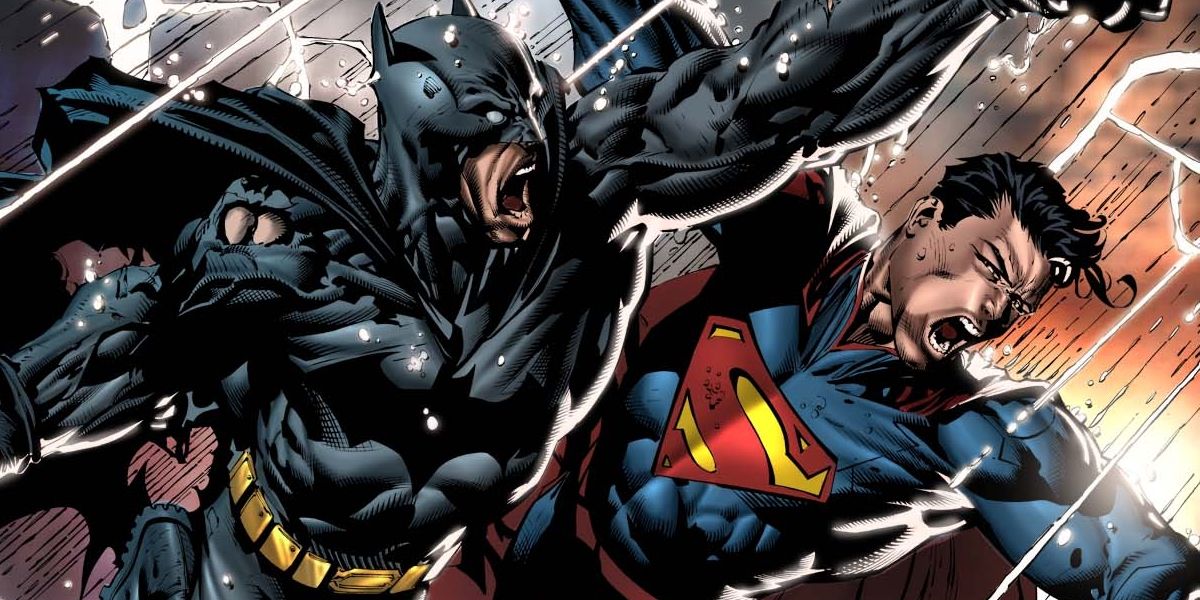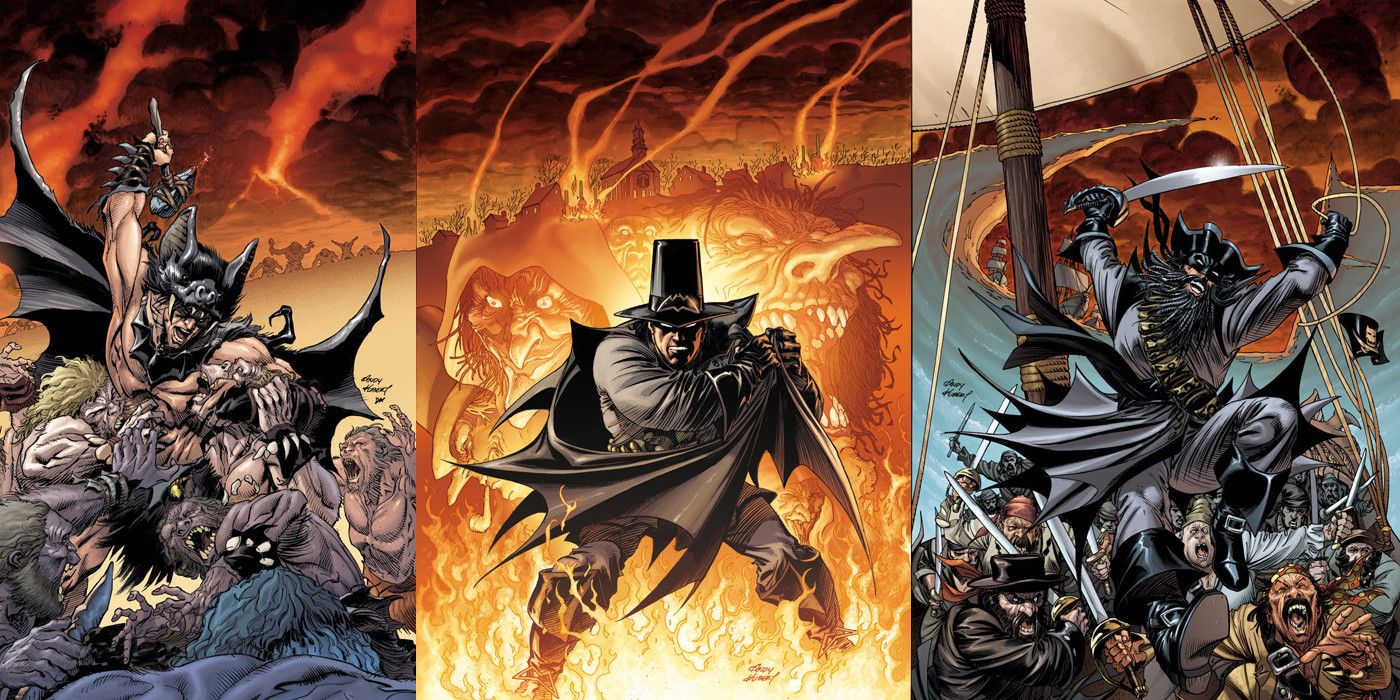Batman has spent many years battling Gotham's criminal underworld as well as fighting alongside the Justice League in safeguarding the planet from various threats. However, as seen in countless comics as in Zack Snyder's Batman v Superman: Dawn of Justice, Batman doesn't always have the best chance fighting superpowered beings. After all, he's just a man - an exceptionally well-trained and intelligent man - with fancy gadgets.
Bruce Wayne doesn't possess any traditional superpowers, which differentiates him from other Leaguers and even makes him more relatable as a character. Still, he's been around for over 75 years, meaning DC Comics has had ample time to experiment with the superhero - and they've come up with some interesting ways to temporarily imbue Batman with superpowers, some of which were taken from other superheroes (and occasionally some supervillains).
Note that not all of these entries are not explicitly powers that were stolen, but rather powers (particularly other people's powers) that Bruce Wayne had obtained as Batman. Therefore, many of these stories exist outside the core DC Universe. Nevertheless, many of these stories are wonderfully written and worthy enough to be added to this list. After all, how many times can DC Comics justify Batman stealing/obtaining powers in the mainline continuity?
Here are 15 Superpowers Batman Has STOLEN.
The Flash
A new series recently began known as the Dark Nights: Metal event, in which DC Comics plans on telling stories that exist within a Dark Multiverse that co-exists alongside the mainline DC Universe. In this Dark Multiverse exists several evil versions of the Dark Knight himself, and one of them goes by the name of Red Death, who's an amalgamation of Batman and the Flash.
In the story, Batman: The Red Death, Bruce is seen aged and alone, having lost all of the Robins. He decides to go back in time and change things for the better (like that ever works). And so, he hunts down Barry Allen and effectively steals Barry's superspeed by attaching him to the Batmobile and driving it directly into the Speed Force, merging Barry and himself into the Red Death.
Green Lantern
Another comic part of the ongoing Dark Nights event is Batman: The Dawnbreaker. In that story, the evil Caped Crusader becomes a coalescence of the Batman and Green Lantern from Earth-32. As with the regular Bruce Wayne, the Bruce on Earth-32 witnesses his parents' murder at the hands of Joe Chill, but rather than growing up to become the Dark Knight, he becomes the Green Lantern.
At least on that Earth, the Green Power Ring never chooses Hal Jordan or any of the other typical Green Lanterns, but rather presents itself to Bruce, who then uses the ring's raw power to murder Chill and, then, eventually the rest of Gotham's criminal underworld.
When he's finally confronted by the Guardians of the Universe and the rest of the Green Lantern Corps, Bruce uses his newfound ability to wipe them all out.
Superman
While the big Batman vs. Superman fight went down in Frank Miller's The Dark Knight Returns, the two DC icons have actually fought each other on numerous occasions, and the scales always tip in Big Blue's favor. After all, he is the one with superpowers. But, what if Batman and Superman shared the same power set. What if the Dark Knight and the Man of Steel were evenly matched?
In Superman/Batman #53, Batman and Superman are fighting the Silver Banshee when Batman suddenly gains the power of Superman. Of course, with so much raw power, Batman's only course of action is to use his newfound abilities to defeat as many criminals as possible, and that eventually leads to the Justice League facing the Caped Crusader head-on.
In the end, they manage to remove Batman's powers before he kills them all.
Cyborg
Another comic from the Dark Nights event is Batman: The Murder Machine, which depicts an amalgamation of Batman (from Earth-44) and one of the DC Universe's other main superheroes. This time, it's Cyborg. After losing Alfred Pennyworth to his rogues' gallery, Bruce slowly starts to succumb to the darkness, until he asks the Cyborg of his Earth to help him build an artificial intelligent Alfred.
At one point, the Alfred Protocol begins to multiply on its own and eventually starts killing off Batman's rogues' gallery (as well as everyone in Arkham Asylum) - one-by-one - in an attempt to protect Bruce. Bruce eventually merged with the Alfred Protocol to create the Murder Machine, and the Caped Crusader used his newfound powers to defeat the Justice League of his world, before moving on to Prime Earth.
Yellow Lantern
Batman has not only been lucky enough to wield the Green Lantern power ring twice but also the Yellow Lantern power ring (though that's not necessarily a good thing, considering the Sinestro Corps are bad guys and all). In Green Lantern #17, one of the Sinestro Corps' power rings forces itself upon Batman, after discerning his ability to "instill great fear," and tasks him with representing Space Sector 2814.
However, Batman rejects the power ring, and once it discovers that the Caped Crusader once held the Green Lantern power ring, the yellow ring detaches itself and flies away.
Interestingly, this wasn't the only time in which Batman wore the Yellow Lantern ring. In Forever Evil #4, Batman uses a Sinestro Corps ring that he's kept hidden for years against Power Ring, an evil version of Green Lantern.
Bane
Following the immensely popular release of Tim Burton's 1989 Batman film, starring Michael Keaton as the eponymous superhero, DC Comics launched a new comic series titled Batman: Legend of the Dark Knight. The series was mostly standalone and focused on Batman during his early years.
One of the storylines, Venom (from Legends of the Dark Knight #16-20), Batman fails to rescue a young girl, and so he begins taking a new drug that enhances his strength so that he may never fail again, but he, unfortunately, becomes addicted to the drug.
That drug - the venom created by Doctor Randolph Porter - eventually became the same formula that Bane uses for his strength. Furthermore, Bane's birthplace, Santa Prisca, also made its first appearance during that story arc.
Man-Bat
In 2010, Grant Morrison worked with DC Comics to launch Batman Incorporated, a series in which Batman attempts to take his crime-fighting crusade to the next level by expanding the Batman mantle around the world. The series was split into two volumes, with the second finding Batman dealing with profound personal issues. His biological son (and one of the Robins), Damian Wayne, was killed by the Heretic, who was sent by his mother, Talia al Ghul.
Bruce was furious... and powerless. In order to finally defeat Talia and the villain Leviathan, Bruce injects himself with the Man-Bat serum (a bat-serum created by Kirk Langstrom) that imbued him with bat-like abilities, thus turning him into a true Batman, so to speak. However, it also turned him feral, which didn't bode well for anyone in his path.
White Lantern
Another - yes, another - time in which Batman took control of a power ring was in Brightest Day. Geoff Johns and Peter Tomassi's Brightest Day crossover continues the story left off with Blackest Night, in which 12 heroes and villains are resurrected for unknown reasons.
In Brightest Day #14, the resurrected Deadman comes across Batman (after having searched for the next bearer of his White Lantern ring) and believes that the Dark Knight is the right person to continue his legacy. Rather than Batman willfully accepting the power ring, Boston Brand forces the ring upon the Gotham hero, who's suddenly consumed with knowledge of the universe. However, the ring cannot be forced onto someone, and so, Batman - after only a few moments - gives the ring back to Deadman.
Ra's al Ghul
Ra's al Ghul, aka the Demon's Head, is virtually immortal, and he has become this way by regularly submerging himself in the Lazarus Pit, a mystical pool of water that can heal any injury and de-age people. It has even restored life once or twice before, though those situations don't always work out in the end. And on one occasion, it even granted Batman immortality.
John Byrne’s Superman & Batman: Generations series follows Batman and Superman as if they aged in real-time, from 1939 to 1999. In one of the story arcs, it's revealed that if two people were to enter the Lazarus Pit at the same time, one would die while the other would become immortal. Bruce Wayne and Ra's al Ghul both attempted this in 1979, and it turns out that the legend was right. Unfortunately for Ra's, he wasn't the one chosen by the Pit; Bruce was. And so, Batman became immortal.
Green Lantern (again)
Before Batman: The Dawnbreaker released, another recent instance in which Batman wore the Green Lantern power ring was in Green Lantern Vol. 4 #9, back in 2006. Now, it's no secret that Batman has his fair share of inner demons, ones that primarily deal with his parents' murder, which he's unable to move on from - and understandably so.
In the aforementioned comic issue, Hal Jordan aides Batman in defeating the Tattooed Man. Afterwards, when they're back at the Batcave, Hal removes his power ring and hands it to Bruce (okay, so Batman didn't necessarily "steal" Lantern's power, but he still wielded it, albeit temporarily). Bruce puts on the ring and is overwhelmed with the power.
The first thing he does with the ring is recreate an image of his parents. At that moment, Bruce removes the ring and hands it back to Hal, saying he's not ready yet.
Dracula
Considering that Batman has been around for decades and remains one of the most popular fictional characters in history, it's not that surprising that he's crossed over with pretty much everyone - from Scooby-Doo to Judge Dredd to Dracula.
During the Red Rain story arc, part of Doug Moench's 1991 Batman & Dracula trilogy, Batman discovers that Dracula and his family of vampires are committing murders throughout Gotham, and he attempts to stop them with the aid of the vampire Tanya.
At one point, Batman is bitten by one of the vampires, gaining all the powers that a vampire possesses. And he uses his new abilities to defeat Dracula, but not before the ancient vampire drains Batman of all his blood, thus killing Bruce Wayne but leaving the vampiric Dark Knight alive and well.
Superman (again)
The great thing about the Injustice games is that it's a Mortal Kombat-style fighting game that allows players to fight as their favorite DC Comics superheroes (and supervillains) against other iconic characters. But, what's interesting is that it actually contains an exceptional story arc that pits half of the world's finest heroes against the other half, with one side being led by Batman and the other by Superman.
Since one side of the war has the Man of Steel and Wonder Woman on their side, the other half uses green super-pills - classified as 5-U-93-R - created by Lex Luthor, who adapted the formula from Kryptonian nano-technology. In Injustice: Gods Among Us Year Five #25, Batman uses one of the pills and goes toe-to-toe with Big Blue, beating him to a pulp.
Metron
One of the most recent times that Batman took power from another character was at the tail-end of the New 52's Justice League series, specifically in Justice League #42. During the Darkseid War story arc, Metron - whose god-like abilities come from the Mobius Chair - summons the League to the Rock of Eternity and informs them that Earth cannot be saved.
The League refuses to accept defeat and Wonder Woman removes Metron from his chair, so that she may sit on the chair and possibly find the answers that they seek. Moments before the chair booms away, Batman sits on it and, effectively, becomes a god. He obtains Metron's omniscience and can obtain an answer to any question he pleases. That's when he discovers that there are, in fact, three Jokers, not one.
Scarecrow
Apart from the core New 52 stories, DC Comics published an ongoing Batman series titled Batman: The Dark Knight from 2011 to 2014. The series' first story arc, titled Knight Terrors, followed Scarecrow and his modified Fear Toxin. In that storyline, all of the inmates in Arkham Asylum had been exposed to Scarecrow's Fear Toxin, but rather than the toxin heightening their fear, it removes it and fills them up with adrenaline instead.
Batman and The Flash are seen working together, trying to locate Scarecrow and the mysterious White Rabbit. When Batman confronts the fear-inducing villain, Scarecrow injects him with the modified toxin. The injection ends up driving the Dark Knight mad, so much that he attempts to kill Superman with his bare hands. Despite his enhanced strength, though, Batman didn't close to defeating the Man of Steel.
Batman: The Return of Bruce Wayne
As anyone who watches any of The CW's DC superhero shows knows, time-travel is nothing to mess around with. Going back in time and changing history can have disastrous consequences and alter the future in ways they may never understand. What's worse is that traveling through time and building up enough energy so that when you reach the present day, you explode and unravel the fabric of reality. That's what Darkseid tried to do with Batman.
In Final Crisis, Darkseid sends Batman into the past, while also giving him the ability to travel through time. In Batman: The Return of Bruce Wayne, readers see Batman going from prehistory through the wild west and all the way up until the noir era, before eventually returning to the present. Fortunately, the Justice League was able to prevent the Omega Energy from going off, thereby preventing the end of their reality.
---
Has Batman stolen anyone else's powers? Let us know in the comments!

